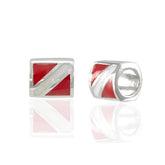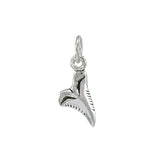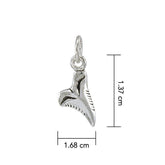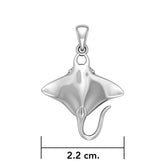Plastic in Our Oceans: What You Can Do
The Personal Connection to the Sea
Peter Stone, president and CEO of the Peter Stone Group of Companies and Dive Silver Jewelry, opens by emphasizing a profound and personal relationship with the sea. His key phrase, “It’s you, me, and the sea,” captures the essence of shared responsibility and connection. He underlines that protecting the ocean is not a distant or abstract goal but a simple, everyday commitment between each individual and the natural environment. The sea is presented as a collective asset, belonging to everyone, and thus necessitating vigilance and care from every person.
The core idea stresses that preservation begins at a personal level—it’s “you and me” who hold both the obligation and the power to influence others. This introduction sets a tone of immediacy and intimacy, showing that ocean conservation starts with individual action rather than waiting for large institutions or governments to solve the problem.
The Duty of Individual Responsibility and Influence
Stone elaborates on the power of individual action, particularly emphasizing personal responsibility and social influence. He challenges the audience not to be passive observers who silently judge littering or environmental neglect. Instead of merely shaking their heads or reacting with frustration, individuals must take proactive steps to intervene thoughtfully.
He talks about the courage required to address others who might be polluting the sea, whether directly on the beach or on boats. The message is clear: prevention is everyone’s duty, and it starts with small acts such as gently calling out friends or strangers on their careless behaviors. Stone acknowledges that confronting people can be uncomfortable, but insists that polite and positive dialogue can help create awareness and behavioral change.
This section drives home the notion that individual action is more effective and necessary than just financial donations or passive support of clean-up organizations, highlighting that direct prevention through influence and education is key.
Prevention Over Aftermath: A Proactive Approach
Peter Stone stresses the importance of focusing on prevention rather than merely dealing with the aftermath of pollution. He references the widespread images of plastic pollution floating on the oceans—symbolizing the visible consequences of neglect—but stresses that this is just the “after effect.”
Drawing a parallel with human health, Stone says he prefers preventive medicine, which is about taking care before illness arises to ensure longevity and well-being. Applying this analogy to ocean conservation, he advocates for stopping trash from entering the sea in the first place. This highlights a paradigm shift from reactive cleanup efforts to proactive prevention strategies.
The pragmatic message is that individuals are the front line of defense for the sea’s health. Awareness, education, and everyday actions aimed at preventing pollution before it happens are more sustainable and impactful than relying solely on groups who conduct cleanups after the damage is done.
Practical Advice: Courage and Kindness in Engagement
Stone offers practical advice on how individuals can assertively and kindly engage others when they witness harmful environmental behavior. Recognizing that it takes courage to step in, he advises that if someone feels uncomfortable confronting others, it’s wise to ensure safety by staying near authority figures like police officers.
He acknowledges that there may occasionally be people who respond negatively, but most people do not intend to harm the sea and may simply be unaware. Stone advocates for a courteous, respectful approach to invoking change, emphasizing kindness as a critical tool in conservation efforts.
He also suggests carrying biodegradable information flyers that can gently educate others about protecting the ocean. This tangible action facilitates spreading awareness and dialogue about environmental responsibility, making prevention not only an individual effort but also a community one.
This section reinforces the practical mindset needed to foster environmental stewardship within everyday social interactions—combining bravery, tact, and education.
The Call to Action: Protecting the Sea for Future Generations
Peter Stone concludes by framing his message as a call to action for current and future generations. The ultimate goal is not only to manage the effects of pollution but to preserve the ocean so that it remains a healthy and vibrant resource for children and their children. This long-term perspective stresses the urgency and moral responsibility embedded in conservation.
He reminds viewers that prevention efforts must begin today; waiting is no longer an option if we want to secure the ocean’s future. It is an appeal to collective and individual accountability grounded in hope and stewardship.
Additional Context: Speaking Engagement and Jewelry as a Conversation Starter
Stone briefly mentions his participation as a speaker at the D8x Show from April 6 to 8, inviting viewers to stop by and engage in conversation. This serves two purposes: to connect with a community of like-minded individuals and to spread awareness through his Dive Silver Jewelry brand.
He encourages people to use the jewelry they wear as a platform to initiate discussions about protecting the sea. This innovative approach shows how everyday personal items can serve as subtle but powerful tools for advocacy, integrating environmental consciousness into fashion and lifestyle.
Key Insights
- The sea belongs to all of us, making ocean conservation a shared responsibility.
- Personal influence and direct engagement are critical to changing behaviors around pollution.
- Prevention of pollution is more effective and desirable than managing its already existing consequences.
- Courage, kindness, and education are essential when confronting others about wasteful behavior.
- Providing biodegradable informational materials can help spread awareness sustainably.
- Protecting the ocean is an urgent intergenerational commitment.
- Everyday items like jewelry can facilitate environmental conversations and advocacy.
Keywords
- Ocean conservation
- Individual responsibility
- Prevention vs. aftermath
- Social influence
- Courageous engagement
- Education and awareness
- Biodegradable materials
- Intergenerational stewardship
- Advocacy through jewelry
- Environmental responsibility
Frequently Asked Questions (FAQ)
Q1: What does Peter Stone mean by “It’s you, me, and the sea”?
A1: He means that ocean conservation is primarily a personal and shared responsibility. Protecting the sea starts with each individual taking action and influencing others.
Q2: Why does Stone emphasize prevention over cleanup?
A2: Because preventing pollution before it reaches the ocean is more sustainable and effective than dealing with trash that has already caused damage.
Q3: How can one safely address people who litter the beach or sea?
A3: Be courteous and kind, approach with respect, ensure safety by being near authority figures if needed, and consider handing out informational biodegradable flyers.
Q4: How can jewelry help in protecting the sea?
A4: Wearing themed jewelry can be a conversation starter that raises awareness and spreads the message about ocean conservation.
Q5: Why is individual action important when organizations like “Trash Hero” exist?
A5: Organizations usually address pollution after it occurs. Individual preventive actions stop pollution at its source and have a long-term, sustainable impact.
This detailed summary aligns with the original structure and the key points expressed in Peter Stone’s video, covering the essence of personal responsibility, prevention, courage in social intervention, and sustainable advocacy to protect the ocean.






